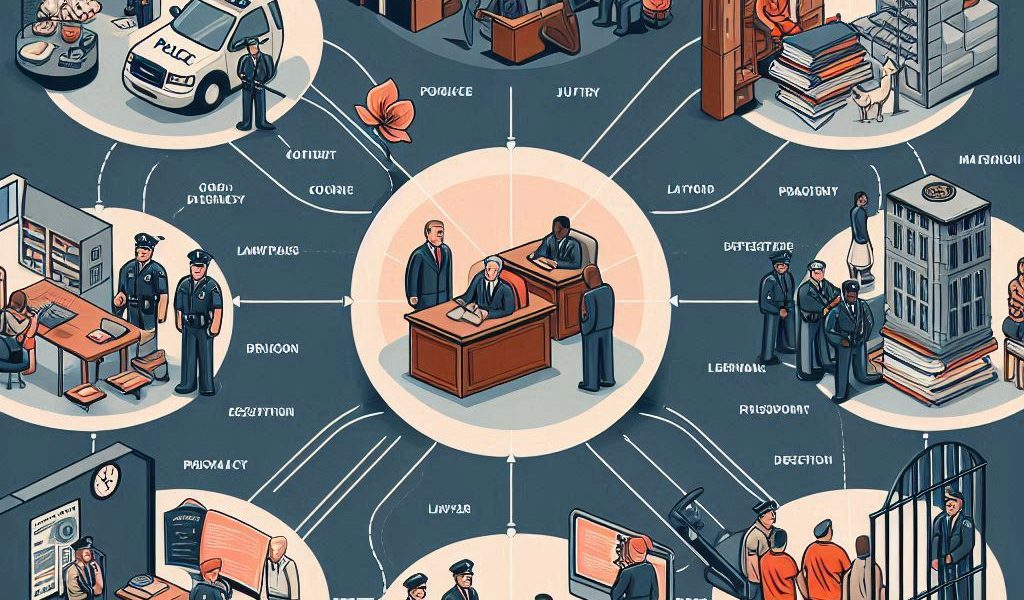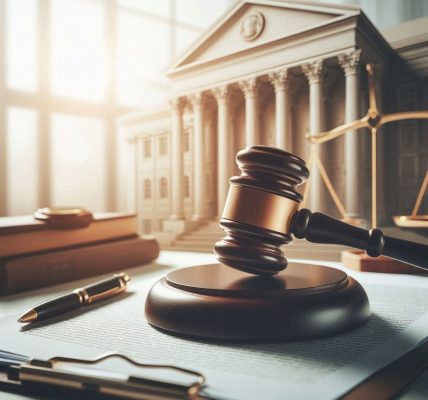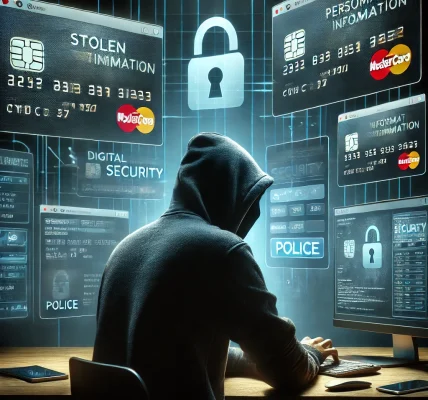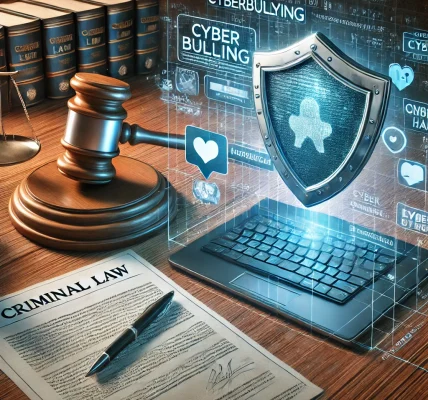The criminal justice system is a structured network of laws, institutions, and procedures designed to maintain law and order while ensuring justice for victims and fairness for the accused. It operates through a series of interconnected stages, each aimed at upholding the rule of law and safeguarding individual rights. Understanding how the system works is essential for anyone interested in legal processes, crime prevention, and justice administration.
Key Components of the Criminal Justice System
The criminal justice system primarily consists of three major components:
1. Law Enforcement
Law enforcement agencies, including the police, are responsible for investigating crimes, gathering evidence, and apprehending suspects. Their duties include:
- Responding to emergency calls and reports of crime.
- Conducting investigations and collecting forensic evidence.
- Arresting suspects and ensuring public safety.
- Enforcing laws set by the government.
2. The Court System
The judiciary plays a crucial role in interpreting and applying the law. It ensures that every individual receives a fair trial and that justice is served. The court system includes:
- Prosecution and Defense: The prosecutor represents the state or government in bringing charges against the accused, while the defense attorney represents the defendant.
- Judges and Juries: Judges oversee trials, ensure legal procedures are followed, and deliver verdicts in cases without juries. Juries, made up of citizens, determine the guilt or innocence of the accused based on presented evidence.
- Trial and Sentencing: If a defendant is found guilty, the judge imposes an appropriate sentence, which may include fines, community service, probation, or imprisonment.
3. Corrections System
The corrections system manages the punishment and rehabilitation of convicted individuals. It includes:
- Prisons and Jails: These facilities house convicted criminals serving their sentences or awaiting trial.
- Probation and Parole: Some offenders serve their sentences outside of prison under supervision.
- Rehabilitation Programs: Designed to help individuals reintegrate into society and reduce recidivism rates.
Stages of the Criminal Justice Process
1. Investigation and Arrest
- A crime is reported or discovered.
- Law enforcement gathers evidence and identifies suspects.
- If sufficient evidence exists, a warrant is issued for the suspect’s arrest.
- The suspect is taken into custody and informed of their legal rights (Miranda Rights in the U.S.).
2. Charging and Initial Court Appearance
- Prosecutors review the evidence and decide whether to file formal charges.
- The defendant appears in court for an arraignment, where they are informed of the charges and enter a plea (guilty, not guilty, or no contest).
3. Pretrial Procedures
- If the plea is not guilty, pretrial motions and hearings take place.
- Bail may be set, allowing the defendant to remain free while awaiting trial.
- Plea bargaining may occur, where the defendant pleads guilty to a lesser charge in exchange for a lighter sentence.
4. Trial
- Both prosecution and defense present evidence and arguments.
- Witnesses testify and are cross-examined.
- The jury (or judge in a bench trial) deliberates and reaches a verdict.
5. Sentencing
- If found guilty, the judge imposes a sentence based on legal guidelines, criminal history, and the severity of the crime.
- Sentences may include imprisonment, probation, community service, or fines.
6. Appeals Process
- A convicted defendant has the right to appeal if they believe legal errors affected the outcome.
- Higher courts review the case and may overturn or uphold the verdict.
7. Corrections and Rehabilitation
- The convicted individual serves their sentence.
- Rehabilitation programs focus on reintegrating offenders into society and reducing reoffending rates.
- Parole boards assess whether an inmate can be released early under supervision.
The Importance of Fairness and Due Process
One of the fundamental principles of the criminal justice system is the protection of individual rights. Due process ensures that:
- The accused is treated fairly and given an opportunity to present their defense.
- Evidence is gathered and presented lawfully.
- Sentences are proportional to the crime committed.
- Wrongful convictions are minimized through legal safeguards.
Challenges in the Criminal Justice System
Despite its structure, the criminal justice system faces several challenges, including:
- Overcrowded Prisons: Many correctional facilities are overburdened, leading to concerns about rehabilitation effectiveness.
- Legal Delays: Court backlogs can result in prolonged trials and delayed justice.
- Disparities in Sentencing: Some argue that sentencing practices are inconsistent, leading to disparities based on race, socio-economic status, or legal representation quality.
- Wrongful Convictions: Errors in investigations, false testimonies, or prosecutorial misconduct can lead to innocent individuals being convicted.
Conclusion
The criminal justice system is a complex yet vital framework that upholds the rule of law and ensures justice is served. From the initial investigation to the final sentencing, each stage is designed to balance law enforcement efficiency with the protection of individual rights. While the system has its challenges, ongoing reforms and advancements aim to improve its fairness and effectiveness. Understanding how this system works empowers individuals to navigate legal processes, advocate for justice, and contribute to a more just society.




